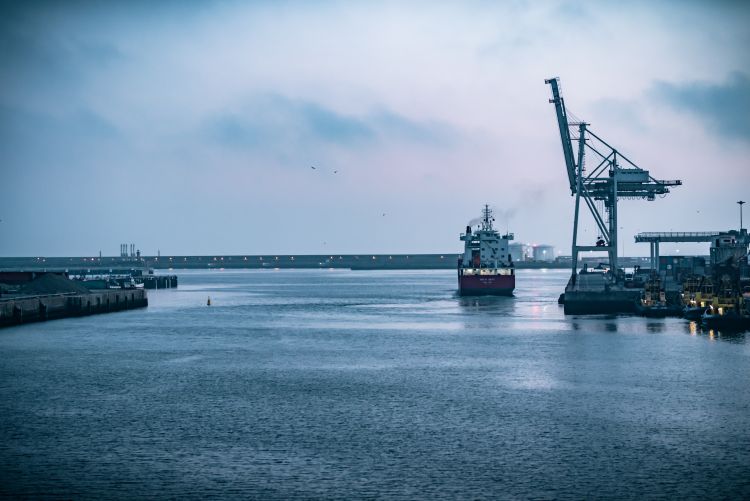
The government has unveiled ‘Maritime Amrit Kaal – Vision 2047’ to strengthen maritime trade as it looks to harness India’s maritime potential in the years ahead. The ministry of ports, shipping, and waterways has outlined nearly 300 initiatives with the goal of positioning the country as a global maritime leader. This vision will require an estimated investment of Rs 75-80 trillion over the next 25 years. The government seeks to achieve several ambitious objectives, including carbon neutrality at major ports, promotion of domestic hydrogen production and distribution, development of 25 cruise terminals, and securing a spot among the world’s top five shipbuilding nations.
Maritime Vision 2047 lays out a long-term plan for the blue economy, emphasising strategic initiatives to enhance port facilities, promote sustainability, and foster international collaboration. The primary focus is on promoting trade, reducing the cost of doing business, and preventing environmental degradation. The blue economy involves the sustainable use of ocean resources for economic growth, improved livelihoods, and job creation while preserving the health of the ocean ecosystem.
READ | Israel-Palestine conflict: India needs to prepare for the fallout
These initiatives align with global environmental standards set by the International Maritime Organisation (IMO) and address longstanding challenges in the maritime sector that have hindered the growth of India’s shipping infrastructure.
Vision 2047 for maritime sector
As part of the vision, the government looks to quadruple port capacity to 10 billion tonnes per annum by 2047, with 100% public-private partnerships (PPPs) planned for 12 major ports. There will also be a focus on acquiring new vessels to increase India’s share in the global shipping market. Out of the estimated Rs 80 trillion required for the entire project, approximately Rs 55 trillion will be allocated to port and vessel-related infrastructure alone. These investments are expected to create 35-40 million additional jobs, according to the ministry of ports, shipping, and waterways.
India has also extended invitations to global investors to participate in this emerging sector. Prime Minister Narendra Modi inaugurated the Global Maritime India Summit (GMIS) 2023, emphasising India’s unique blend of development, demography, democracy, and demand, which presents a significant opportunity for investors. Already, four global ship leasing companies have registered with Gift-IFSC, a special economic zone in Gujarat.
This maritime vision is rooted in the need for reliable and resilient supply chains in a post-pandemic world. Strengthening maritime infrastructure is crucial for the recently announced India-Middle East-Europe mega economic corridor (IMEC). Under IMEC, the development of a next-generation mega port and container transshipment port is already underway, with additional plans for island development, strengthening inland waterway systems, and expanding multi-modal hubs.
India’s maritime sector holds immense promise due to its exceptional geography. With a coastline spanning 7,517 kilometres, nine coastal states, and 1,382 islands, India’s shipping industry plays a pivotal role in the country’s trade. Nearly 95% of India’s trading by volume and 70% by value relies on maritime transport, according to the ministry of shipping. Despite this, the Indian fleet’s global share remains at around 1%, while China accounts for 5%, and Singapore accounts for 6.5% in global tonnage.
To address this, India has allowed foreign direct investment (FDI) of up to 100% under the automatic route for port and harbour construction and maintenance projects. In the Union Budget 2023-24, the total allocation for the ministry of shipping stood at $1,813.16 million.
Recognising that Indian-flag shipping tonnage has not kept pace with the country’s trade needs, the government is considering nine policy interventions. These include tax-related changes and streamlining vessel registration processes. The government is also contemplating revisiting the applicability of TDS (tax deducted at source) on wages paid to Indian seafarers, allowing Input Tax Credit on fuel and spares procured for vessels, and more. The Maritime Vision 2047 report also recommends exempting Indian ships from GST on reverse charge for maintenance services consumed outside India and granting infrastructure status to the shipping industry.
As previously highlighted by Policy Circle, India’s major ports require significant expansion and modernisation to become a global leader in the maritime economy. Currently, the ports are ill-equipped to handle larger vessels and increasing cargo volumes. Attracting foreign investments remains a top priority for the government, as enhancing port efficiency, reducing turnaround times, and contributing to smoother international trade operations must become a reality rather than a distant aspiration.
